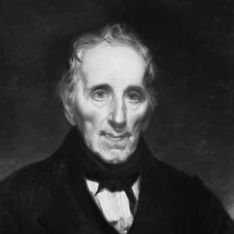
Biography
Alexander Morison was born in Bailie Fyfe’s Close, in Anchorfield, near Edinburgh in 1779. Like so many fellows and past presidents of the College, he attended Edinburgh’s Royal High School, before spending five years at the University of Edinburgh. His successful MD, De Hydrocephalo Phrenitico reflected the interest in cerebral and mental illness that he would develop throughout his life, a specialism which would be recognised today as a forensic psychiatry.
In 1808 Morison moved to London and decided to specialise in mental illness, but found it difficult to establish himself. Morison’s first appointment was as Inspecting Physician of Lunatic Asylums in Surrey in 1810. While working in London, Morison was appointed President of the Royal College of Physicians of Edinburgh from 1827 to 1829. In 1835, Morison was appointed Physician to the Bethlehem Hospital. In 1838, Morison was appointed personal physician to Princess Charlotte and, later, to her husband Prince Leopold. He was knighted the same year.
He was eager to return to Edinburgh, preferably to a chair in mental illnesses but no post was available or was created for him. Nevertheless, he returned to his home city and gave highly popular ‘unofficial’ courses of lectures. Some of these were included in his books, probably his greatest contribution to psychiatry and forensic psychiatry.
The most famous portrait of Morison was done by a patient of his, Richard Dadd. Dadd, an artist and portrait painter, created the artwork based on sketches sent to him by Morison’s daughter. Dadd was admitted to Morison’s care after being convicted of murdering his father, whom he believed to be the devil. The portrait was in the possession of the College for many years before it was sold to the Scottish National Portrait Gallery.
Morison and his first wife had 16 children, the first born and christened on board the ship Royal Albert off Cape Town. He died at Balerno Hill House, Currie in 1866, leaving behind his second wife. He bequeathed his property ‘Larchgrove’, and land in Newhaven to the College, who then sold it to create a lectureship in his name as well as fund prizes for long-serving psychiatric nurses. Several of his papers, drawings and diaries are held in the College archives as well as references to the Dadd portrait. Perhaps the greatest compliment paid to him and one that would have given him much pleasure was that in the History of Bedlam, ’the asylum reformer par excellence.’
Notable Achievements
From 1827 to 1829, Morison was president of the Royal College of Physicians of Edinburgh.
In 1838, Morison was appointed physician-in-ordinary to Princess Charlotte of Wales.
Morison was knighted in 1838.
Key Publications
- Outlines of Lectures on Mental Diseases (1826)
- Cases of Mental Disease, with Practical Observations on the Medical Treatment (1828)
- The Physiognomy of Mental Diseases (1840)



